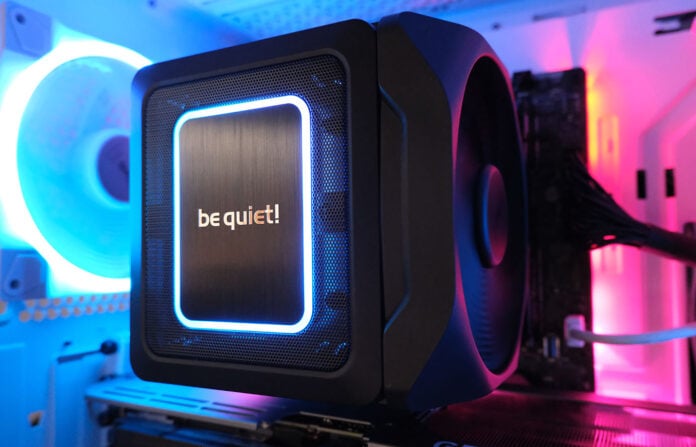German outfit be quiet! has revamped its portfolio of high-end Dark Rock coolers with the arrival of Dark Rock Elite and Dark Rock Pro 5, priced at £109.99 and £99.99, respectively. Introduced as direct successors to 2018’s Dark Rock Pro 4, the duo has been a long time coming and are marketed, quite simply, as “the new kings of air cooling.”
Lofty claims indeed, yet timing couldn’t be better as cooling for your next CPU upgrade has become a hot topic, if you’ll excuse the pun. Today’s premier chips will do whatever it takes to scale the benchmark charts, and more often than not, the end result is wild power consumption and rapid heat build-up that takes some shifting.
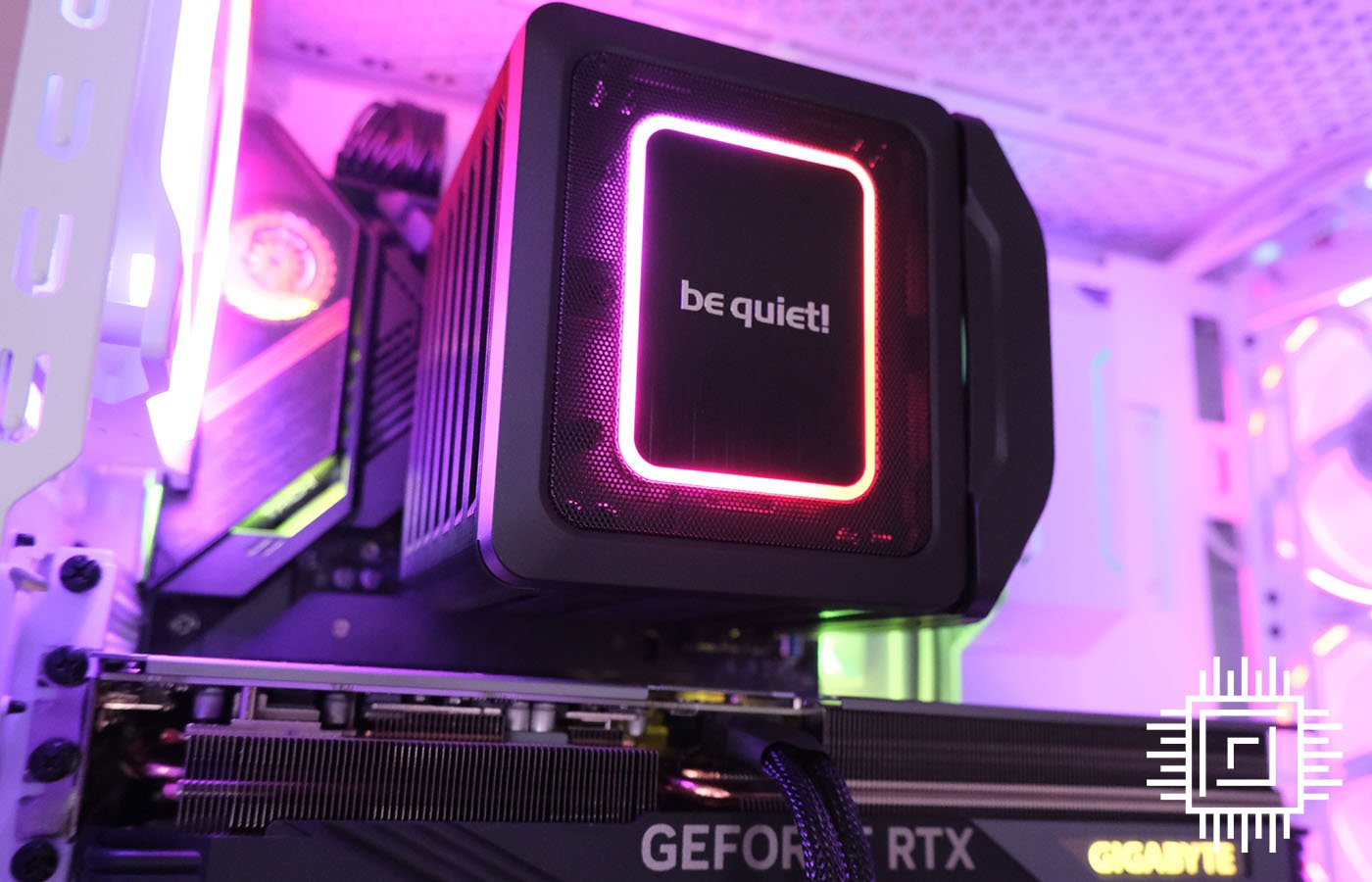

be quiet! Dark Rock Elite
£109.99
Pros
- Ideal for potent, quiet PC
- Near silent at low speed
- Elegant RGB lighting
- Simple installation
- No fiddly fan clips
Cons
- Struggles with Core i9
- Basic bundle and warranty
Club386 may earn an affiliate commission when you purchase products through links on our site.
How we test and review products.
A word between friends; the official press guide for the world’s fastest consumer CPU goes as far as to recommend testing with a 360mm all-in-one liquid cooler in order to extract maximum performance. Even a 240mm is deemed insufficient, so where does that leave traditional air coolers?
Despite mass migration to AIOs, we’re of the opinion a good ol’ heatsink-and-fan still has plenty to offer. They’re often quieter, easier to install, and largely free of cable clutter, plus if you happen to be nervous about the longevity of your hardware, take solace in the fact there’s zero chance of an air cooler springing a leak.
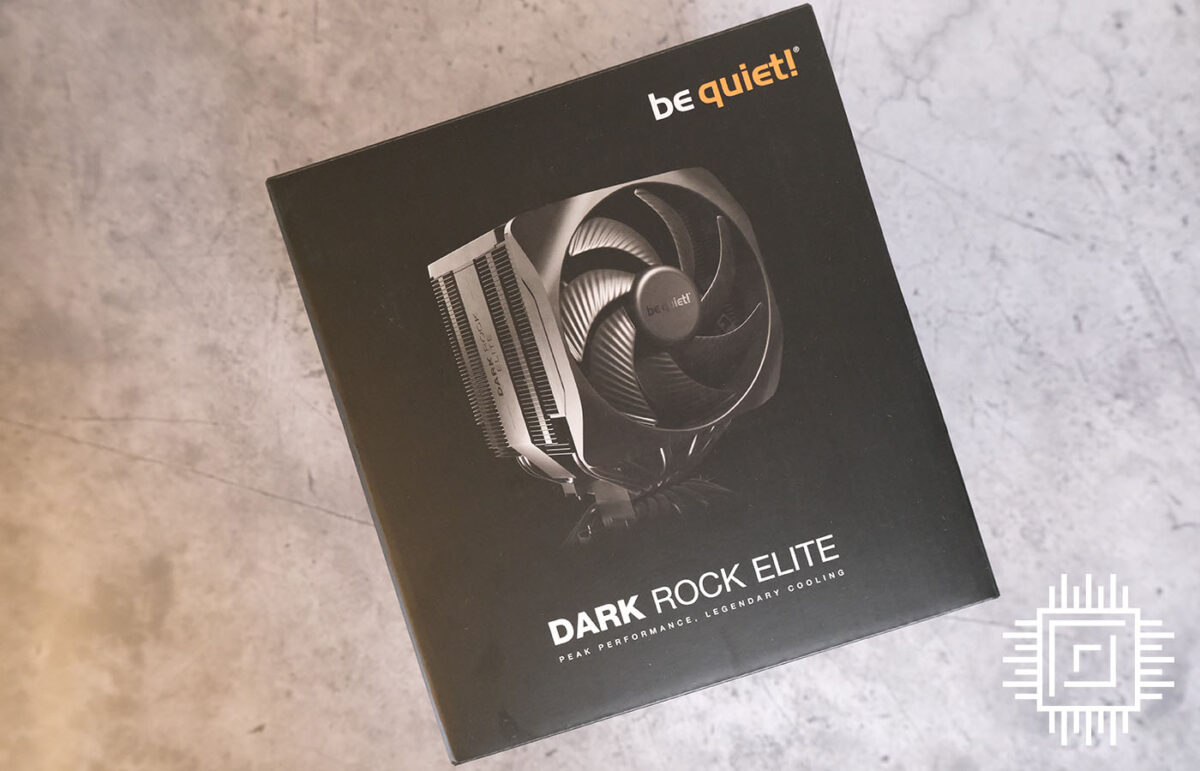
Club386 has had the opportunity to put flagship Dark Rock Elite through its paces, and though the cooler’s features represent a departure from what has come before, fans of the series will appreciate the various upgrades.
The good news is that be quiet! hasn’t broken what already works well. Packaging stays true to the firm’s minimalist stealth-black approach, and the bundle includes individually bagged mounting kits for AMD and Intel, a small tube of thermal paste and a good-quality screwdriver that makes light work of reaching the mounting screws.
Everything you need to get up and running, yet despite Elite branding and the same £110 price tag as rival Noctua NH-D15, be quiet!’s contents don’t mirror a sense of ultra-premium presentation. We’d expect a full-size tube of paste at this price point, the paper manual feels basic by comparison, and if you view CPU cooling as a long-term investment, note that be quiet!’s three-year warranty is half the length of Noctua’s.
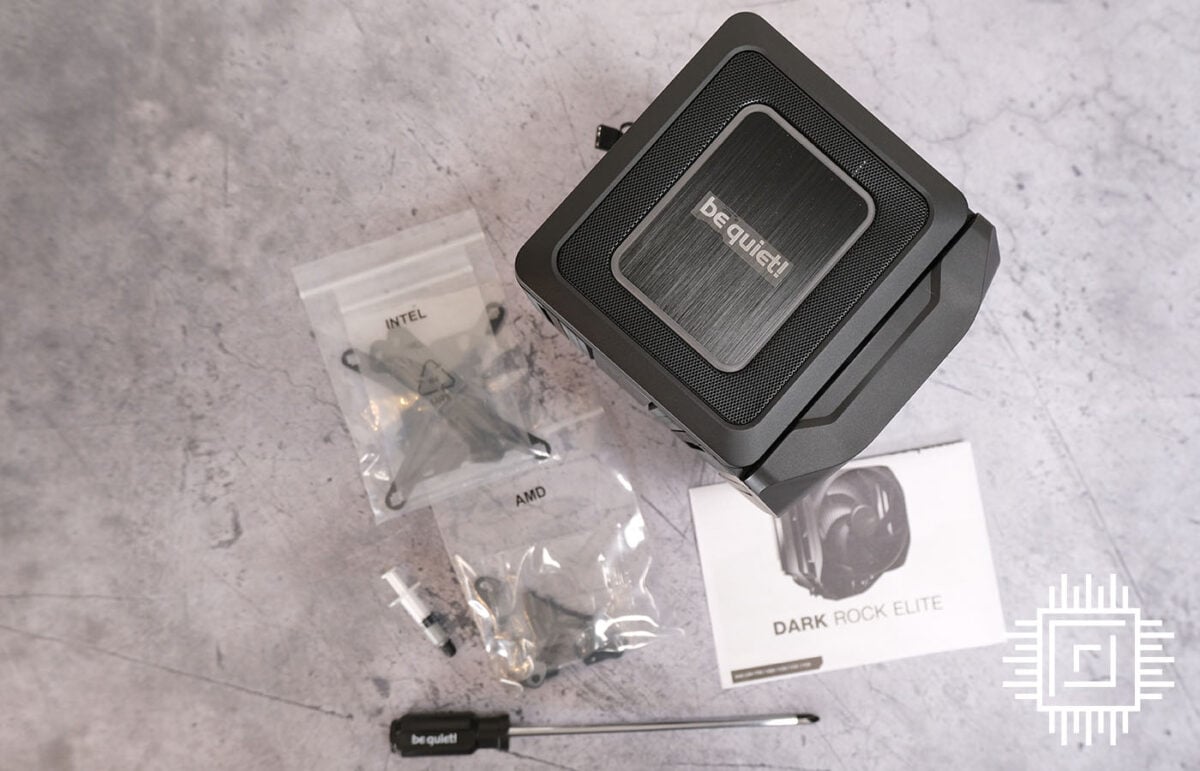
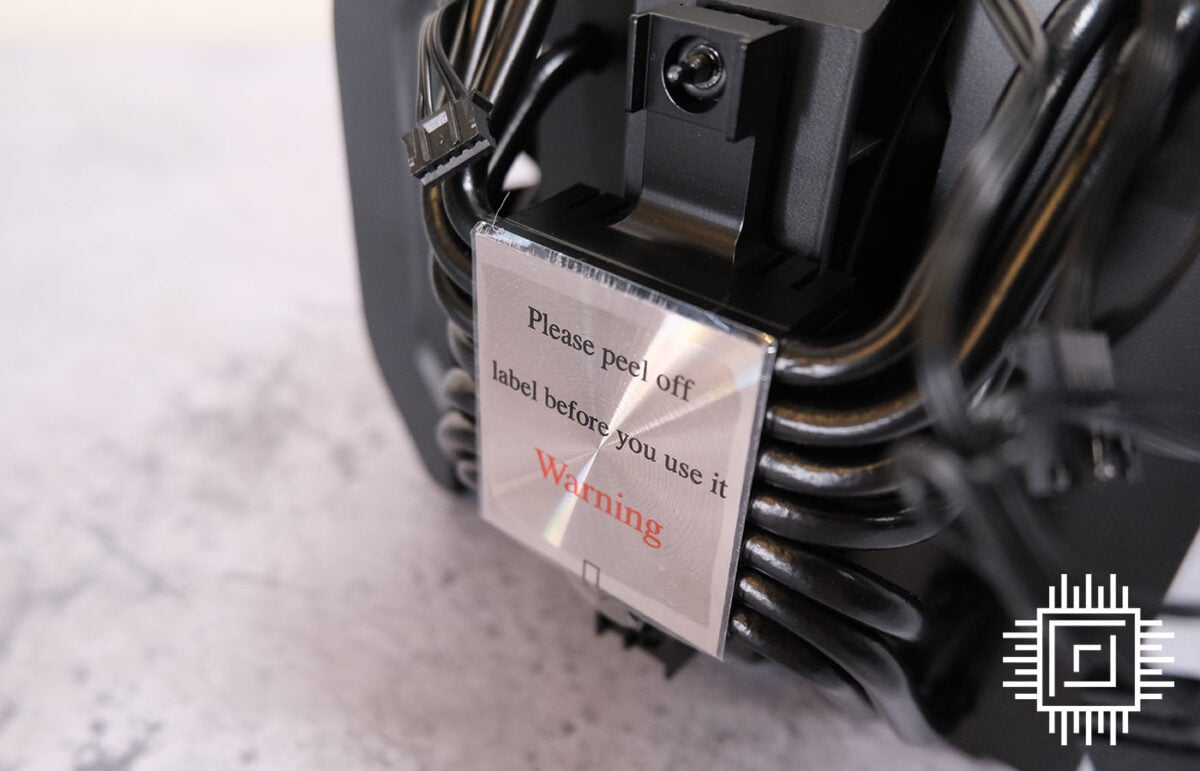
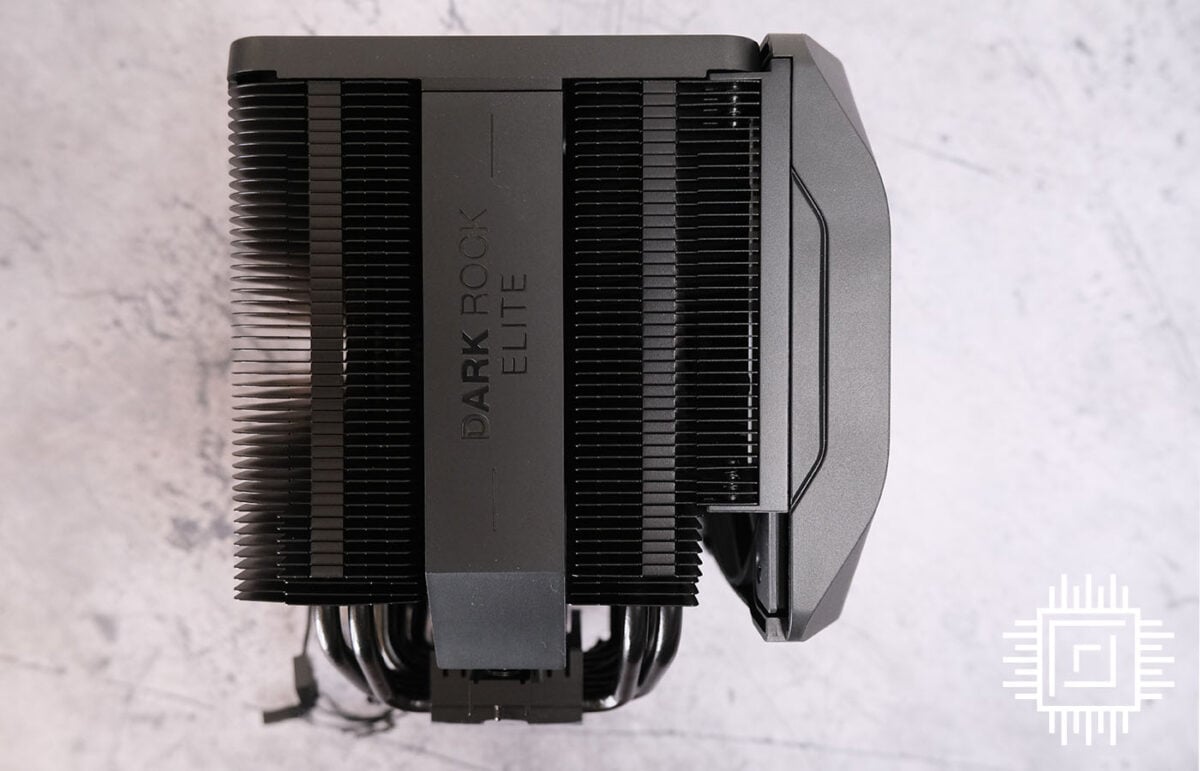
The cooler itself is a beast of a unit. Described by the manufacturer as a “beefy design” and “an eyecatcher in any system,” Dark Rock Elite measures 145mm (L) x 136mm (W) x 168mm (H) and tips the scales at a hefty 1.34kg. That’s a fraction taller and heavier than the aforementioned NH-D15, and the extra space enables a few new adornments this time around.
The front Silent Wings PWM fan, for example, has been upgraded from 120mm to 135mm and now rests on a notched rail system that allows height adjustment in half-a-dozen steps. The notches are pronounced enough to ensure the fan doesn’t slide around willy-nilly, and though they require a fair bit of force to adjust, they look and feel much nicer than fiddly fan clips. Do note that shorter front fin-stack enables 63.3mm clearance for the closest memory slot, while the fan can be raised up to 69mm. Handy to have the option, though from an aesthetic point of view, Dark Rock Elite looks best when the top sits entirely flush.
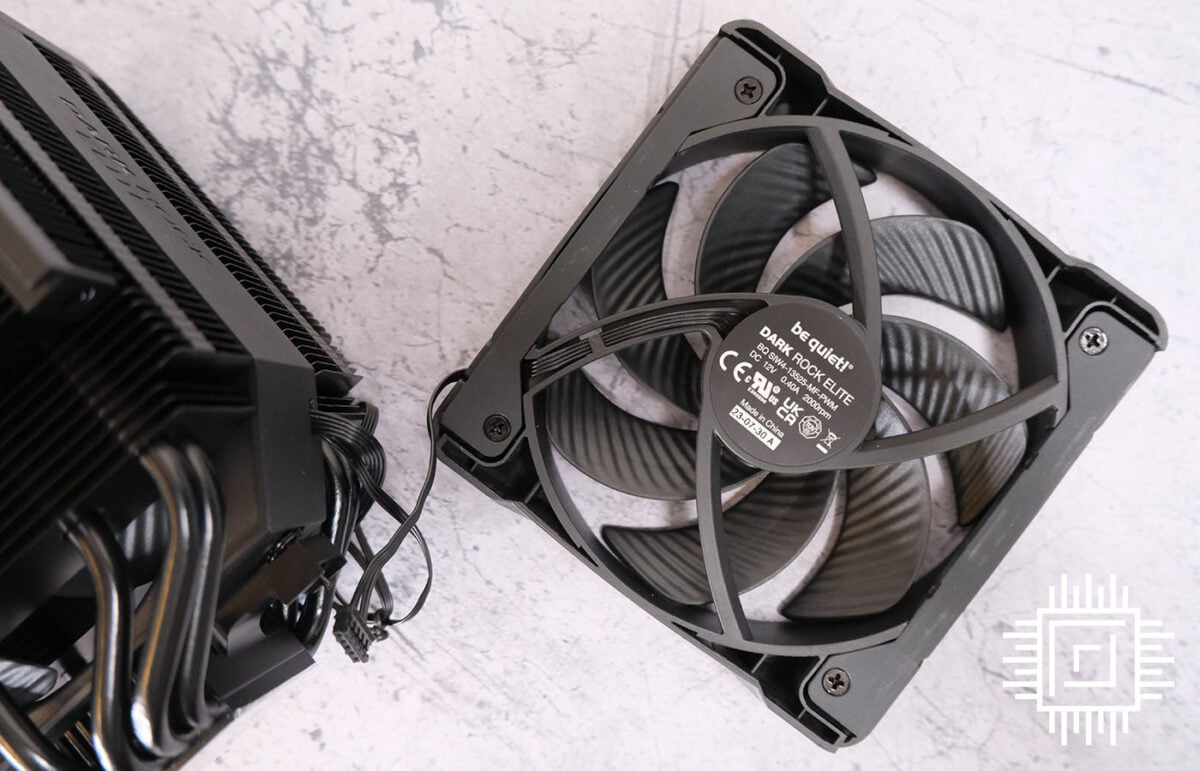
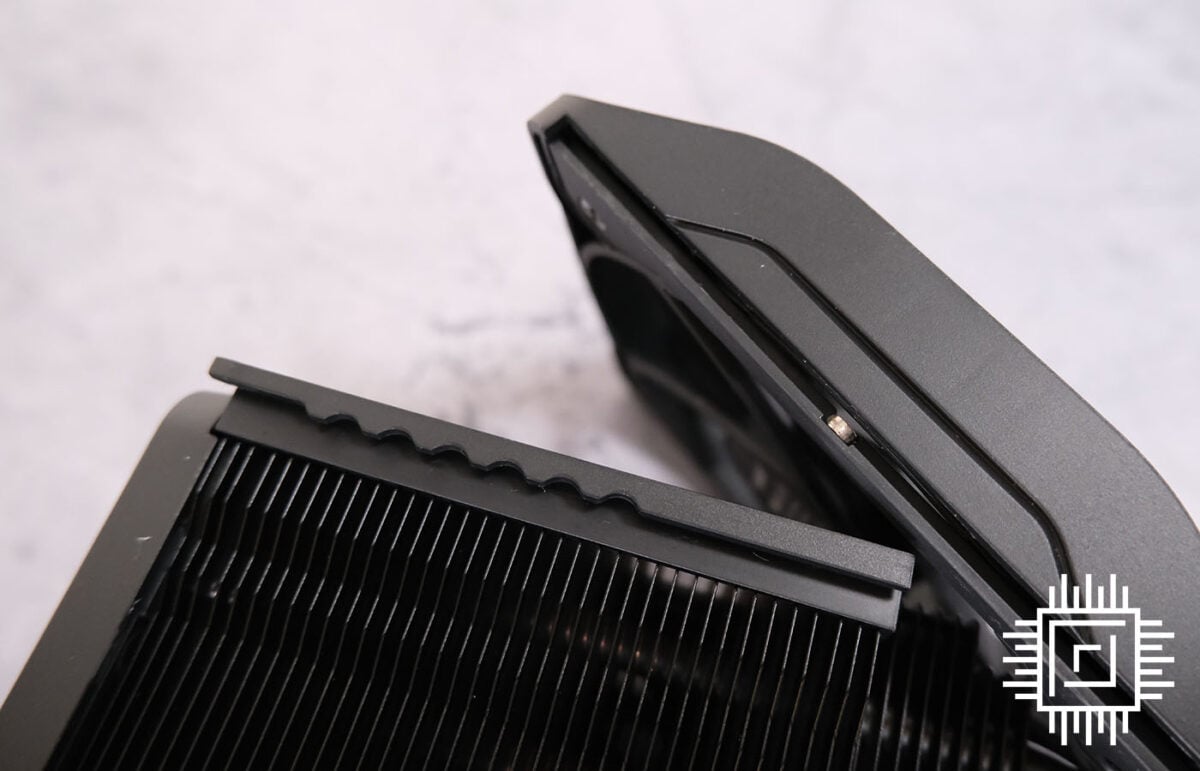
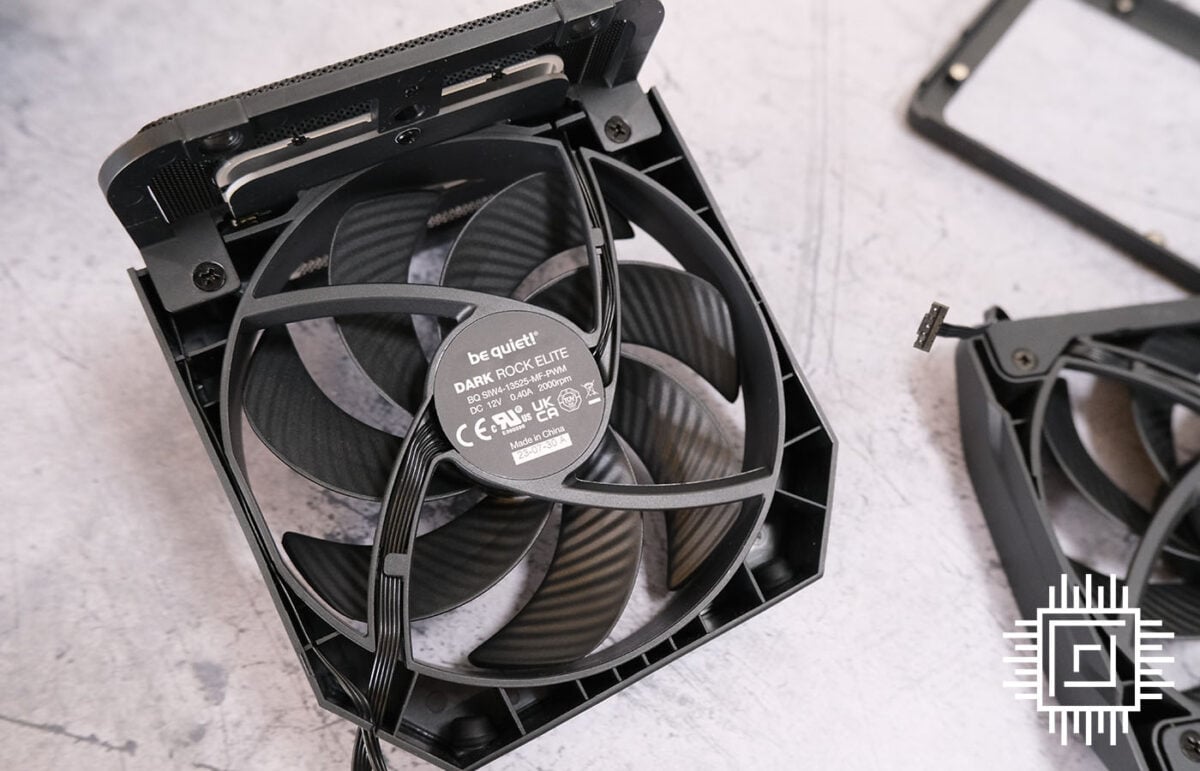
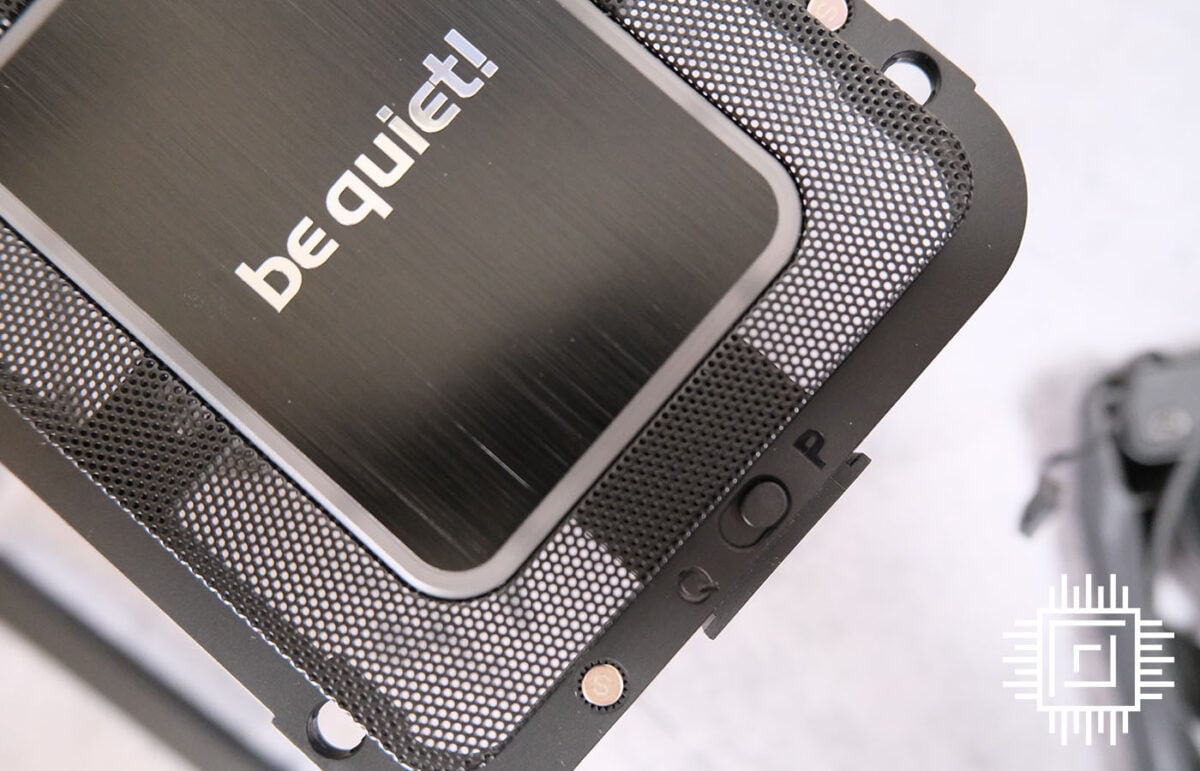
be quiet!’s central fan, also a 135mm Silent Wings PWM, is stowed inside an easily removable frame that slides tidily between the familiar dual-tower heatsink arrangement. Tool-free fans are a definite boon, and in a first for flagship be quiet! air cooler, the top cover is adorned with a ring of ARGB lighting.
An inevitable change given the soaring popularity of PC illumination, however while the band of light is even and plenty bright, it’s a shame the company logo isn’t backlit, too. The end result is a modest lighting effect that feels more like a token gesture than a key feature. What’s more helpful to be quiet!’s traditional audience is the speed switch hidden beneath the top cover’s removable plastic frame. Toggle from Performance to Quiet and you can reduce maximum fan speed from 2,000RPM to 1,500RPM without having to venture into BIOS.
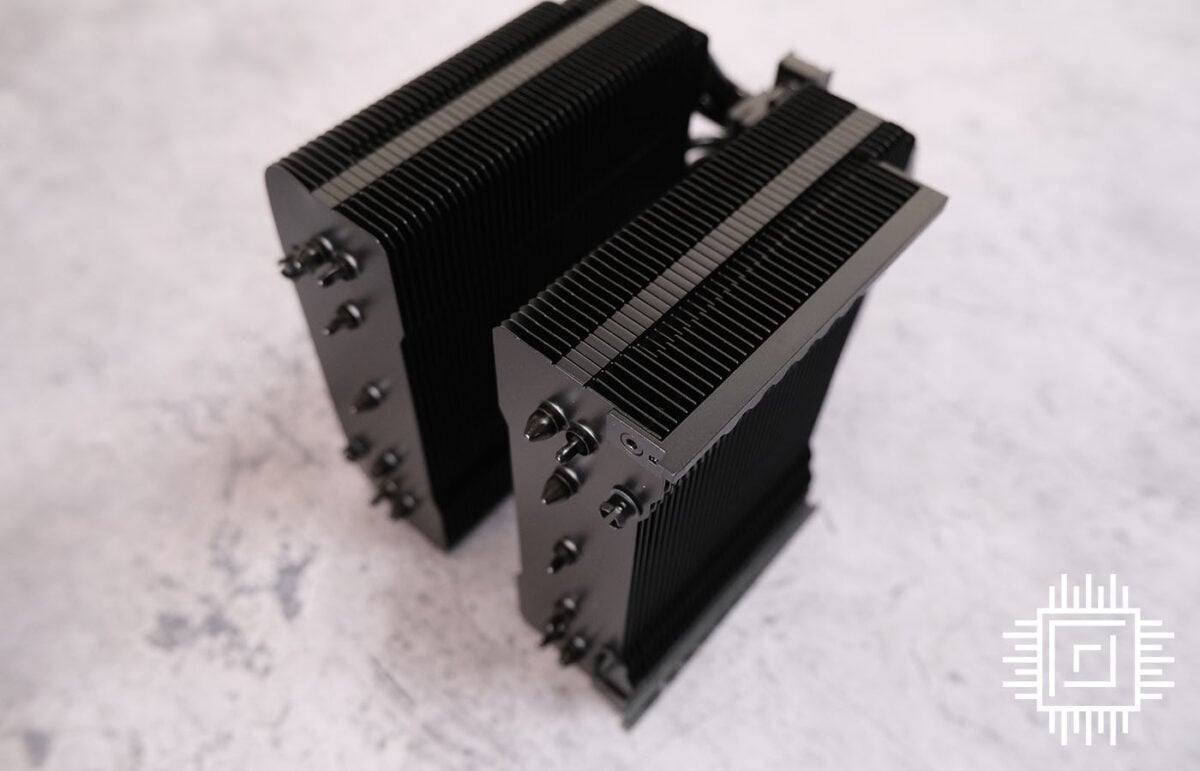
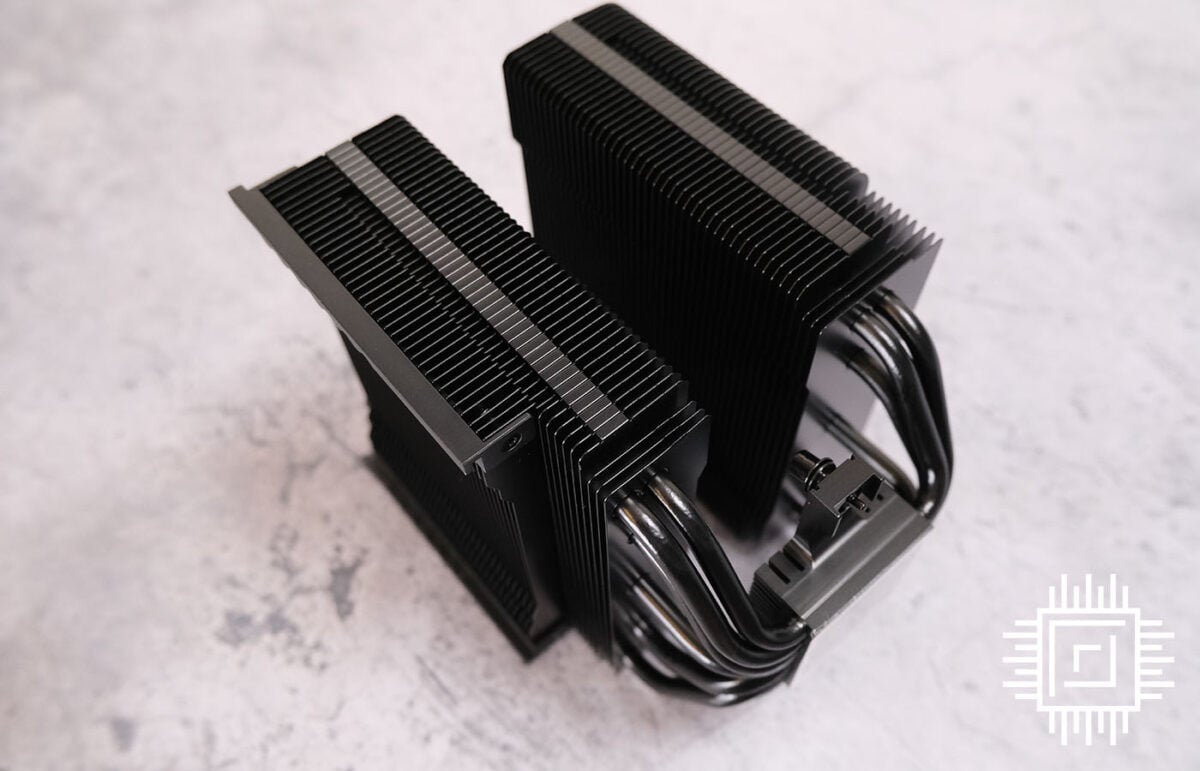
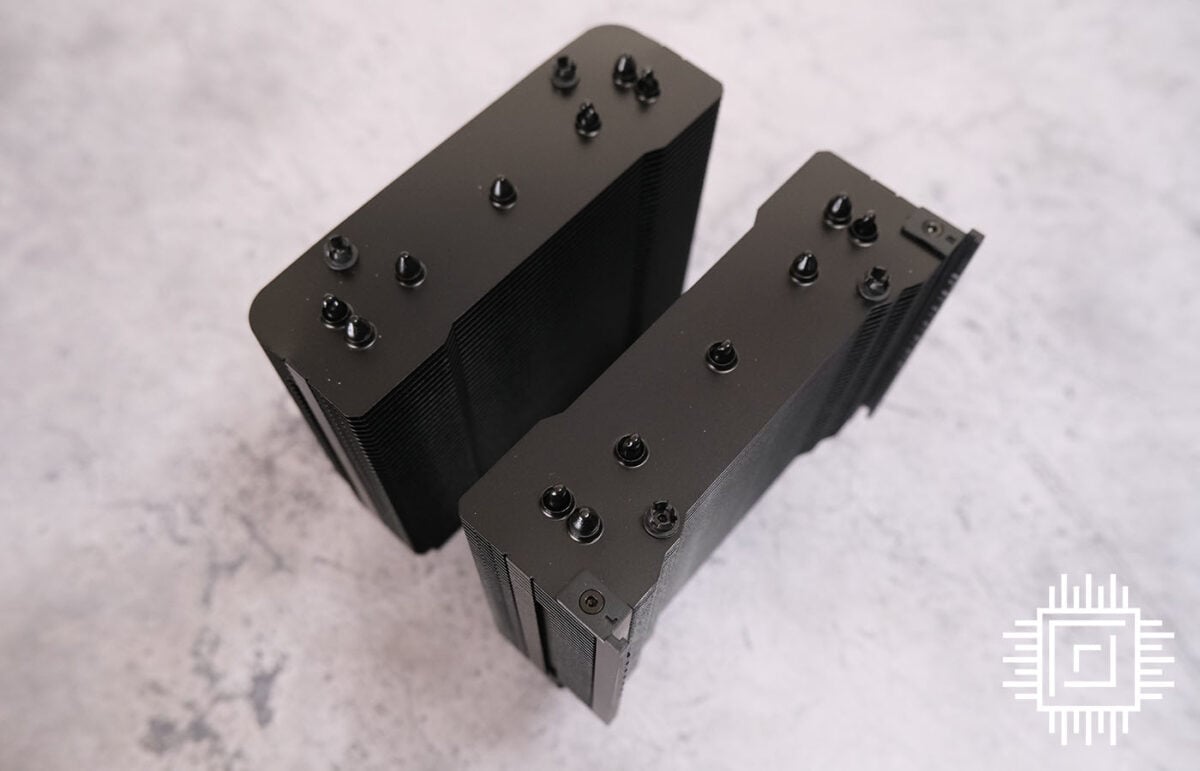
Construction quality feels excellent throughout and be quiet!’s black coating is particularly sexy. Said to feature ceramic particles that aid heat transfer, the matte-effect finish bodes well for a stealthy build. Indeed, the metalwork is so sleek that we’d like to see a variant without the plastic top cover; there’s a raw, natural beauty to the metal that we prefer.
Dual stacks of aluminium fins are traversed by seven 6mm-thick heatpipes that feed into a CNC-machined, nickel-plated copper baseplate. Paired to dual 135mm fans, be quiet! reckons Dark Rock Elite can deliver 280W of cooling performance. That’s a 12 per cent increase over last-gen Dark Rock Pro 4, and 10W more than second-rung Dark Rock Pro 5. On paper, that ought to be ample for even a Core i9-14900K, but as enthusiasts will know, one manufacturer’s TDP rarely translates well to another.
Installation
New features and a bold aesthetic haven’t made the latest Dark Rock any harder to setup. Quite the contrary, as installation is practically identical to the 2018 model. be quiet!’s mounting kit for LGA1700 looks indistinguishable and is fixed using a metal rear bracket whose screws are held in place with o-rings. Standoffs clamp the bracket in situ, and mounting arms then attach using four screws; and yes, every available component is finished in black.
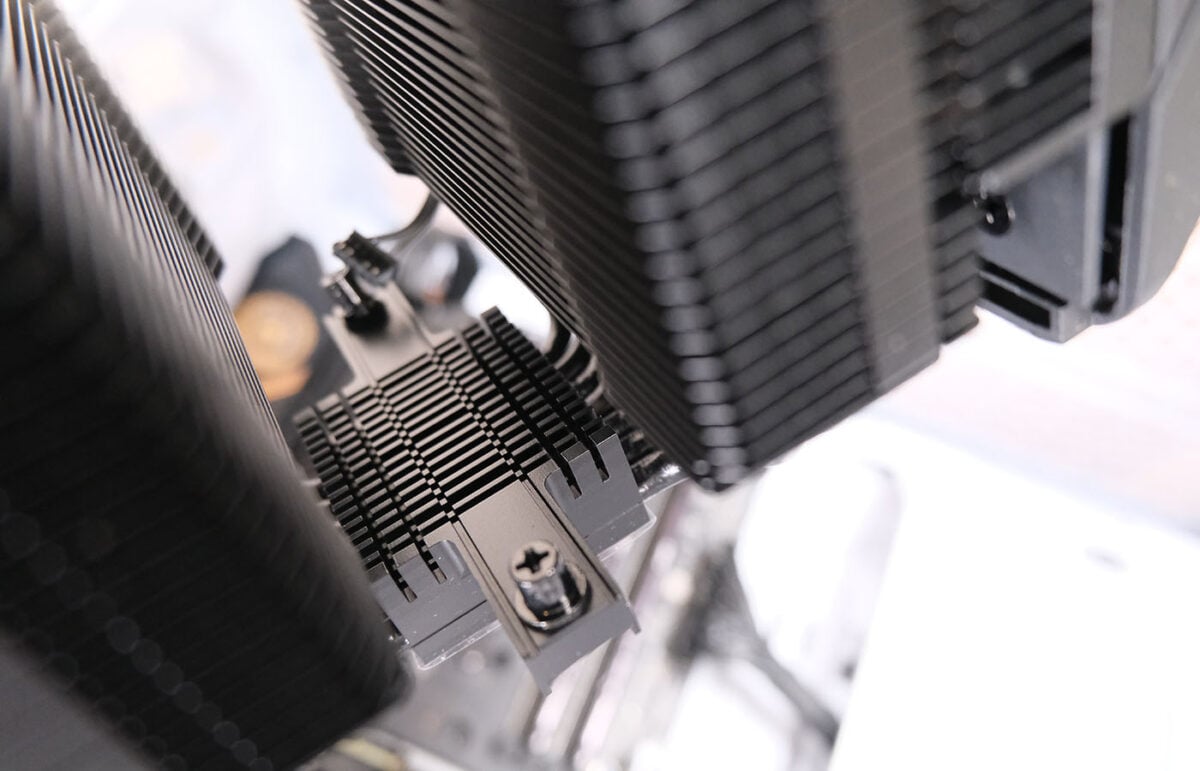
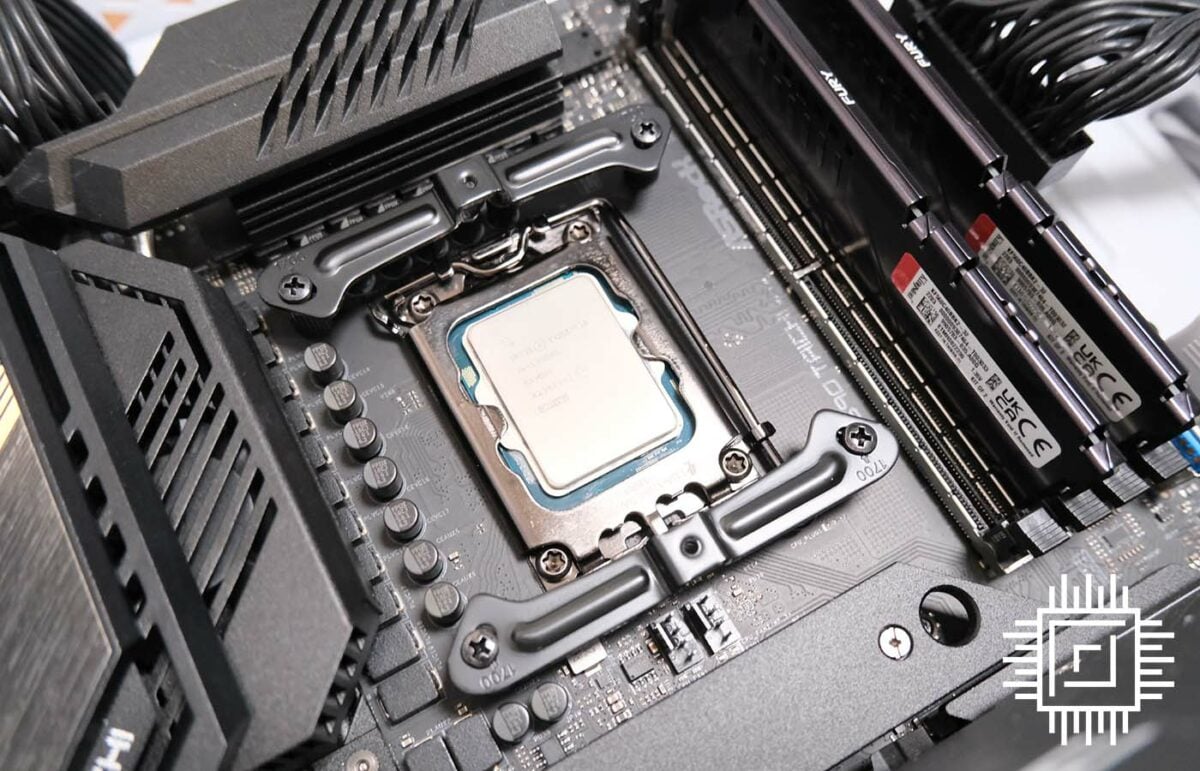
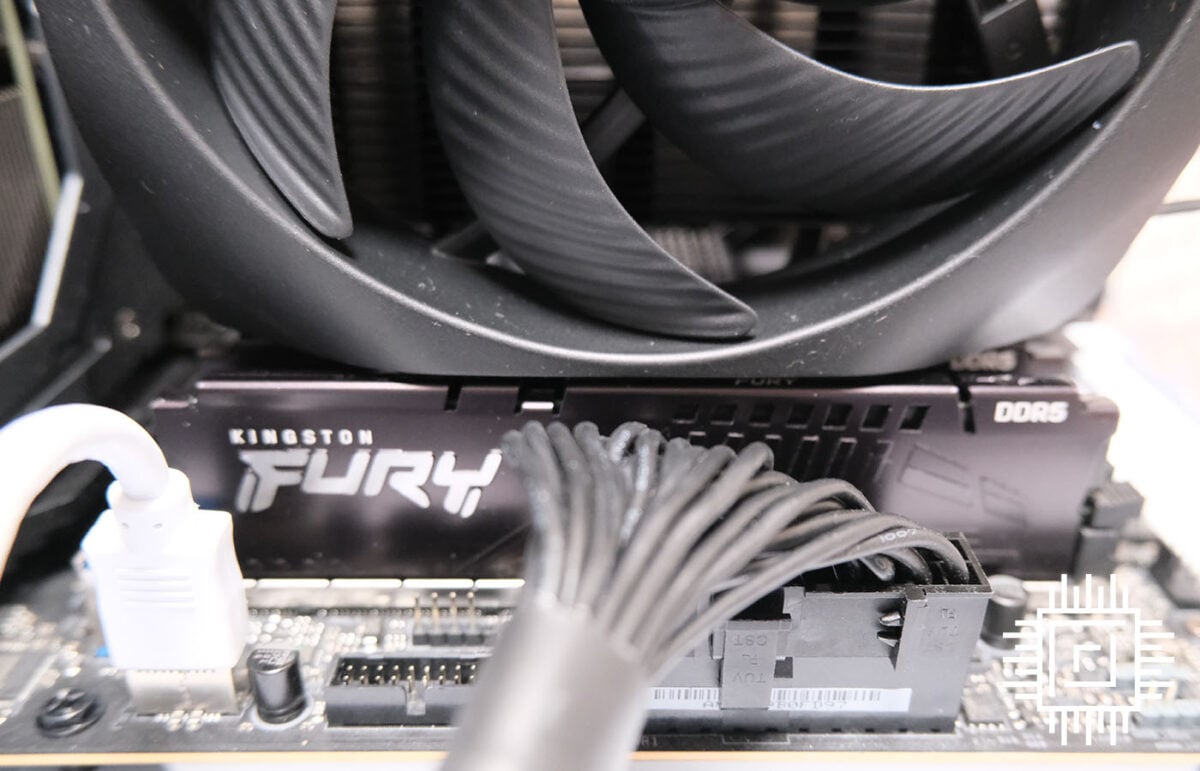
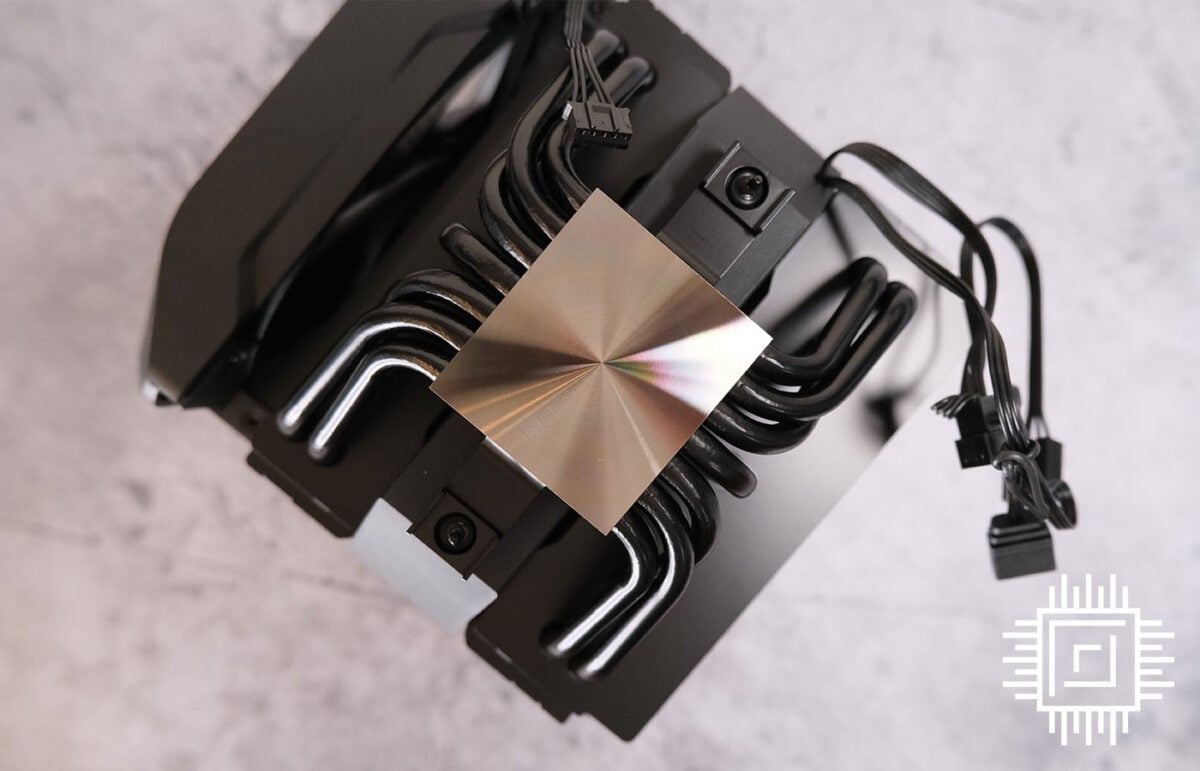
The mounting bridge is pre-attached to the base – meaning no need to balance an extra part while lowering the cooler in place – and the entire installation process can be completed in a matter of minutes. Do note that there’s no paste pre-applied, so remember to use the provided tube before the cooler hides your CPU indefinitely. Our preference on LGA1700 is a mid-sized blob in the middle flanked by a smaller dab in each of the CPU’s four corners.
Our Kingston Fury Beast DDR5-6000 memory looks made to measure, leaving just a tiny gap between the DIMMs and fan at its lowest position. Cable management is straightforward, too, with the central fan assembly providing a connector to link the front fan, a four-pin PWM motherboard header, plus a three-pin ARGB connector for synchronised effects. Simple.
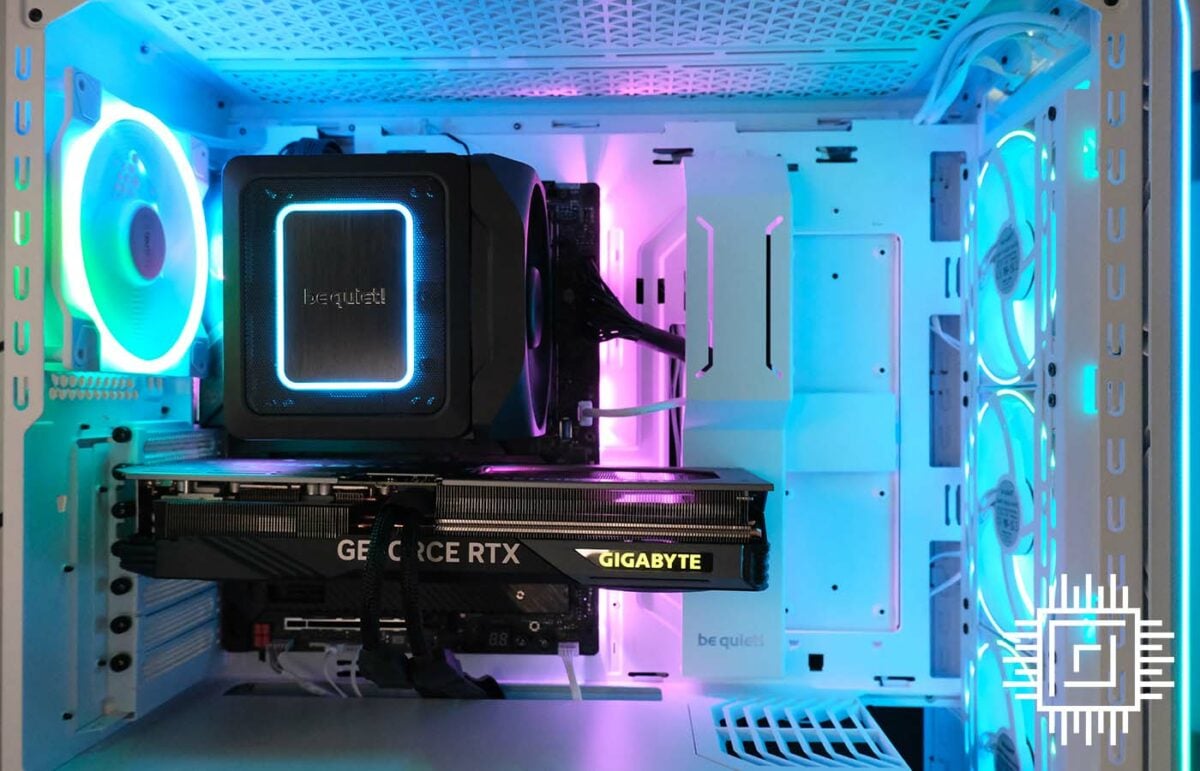
Setup is painless for such a large item, but it’s time now to address the big question; can Germany’s finest air cooler knock Austria’s mighty NH-D15 chromax.black off its perch? We’ve tested both, from scratch, so let’s get some answers.
Performance
The somewhat disingenuous nature of today’s enthusiast CPUs is such that the numbers written on the box don’t paint a complete picture. Core i9-13900K maximum power soars to 253W but maintaining that top level of performance and the frequencies that come with is easier said than done.
Without requisite cooling, peak performance will drop off quickly, and for that purpose we’re testing the CPU configured in BIOS to remain at 253W under full load. The question we want to answer is whether each cooler can keep to that wattage, what it means for core temperature, and how it affects benchmark results.
Getting testing underway, we begin with noise readings reflective of a real-world, fully built PC. With chassis fans fixed to 600rpm at all times, noise is measured with CPU cooler fans configured in three states: low-speed (600RPM), high-speed (1,200RPM), and the maximum applicable to each cooler model.
| Cooler Acoustics | Type | Noise at 600RPM | Noise at 1200RPM | Noise at max RPM |
|---|---|---|---|---|
| be quiet! Dark Rock Elite | Air | 30.2 | 33.7 | 41.8 |
| Noctua NH-D15 chromax.black | Air | 30.8 | 39.6 | 44.2 |
| be quiet! Pure Loop 2 280 | Liquid | 31.1 | 34.8 | 46.0 |
| DeepCool LT720 WH | Liquid | 32.6 | 36.1 | 53.3 |
| MSI MAG CoreLiquid E360 | Liquid | 31.2 | 40.2 | 52.6 |
When weighing up the pros and cons of air or liquid cooling, be certain to consider the acoustic impact. In our experience, even the quietest AIOs aren’t as serene as a basic heatsink and fan. Having no pump noise is a plus for anyone looking to build a near-silent PC, and even at medium speeds of 1,200RPM, Dark Rock Elite is markedly quieter than the NH-D15 chromax.black. At low speed it is barely audible and as close to silent as you’re going to get outside of a passive build.
| Cinebench Score | 253W 600RPM | 253W 1200RPM | 253W Max RPM | 153W 600RPM | 153W 1200RPM | 153W Max RPM |
|---|---|---|---|---|---|---|
| be quiet! Dark Rock Elite | 36,544 | 36,614 | 36,668 | 31,899 | 32,126 | 32,127 |
| Noctua NH-D15 chromax.black | 36,657 | 36,831 | 36,991 | 31,674 | 32,058 | 32,183 |
| be quiet! Pure Loop 2 280 | 36,846 | 37,001 | 36,974 | 32,010 | 32,190 | 32,187 |
| DeepCool LT720 WH | 36,333 | 36,742 | 36,999 | 32,034 | 32,260 | 32,245 |
| MSI MAG CoreLiquid E360 | 36,730 | 36,830 | 37,294 | 32,085 | 32,285 | 32,266 |
Running Cinebench R23’s built-in stress test is always helpful in gauging cooler optimisation. We expect the Intel Core i9-13900K to score up to 38k when all cores are firing optimally at 253W, dropping to ~32k when power is reduced to 153W. It is not uncommon in DIY circles to power-limit enthusiast CPUs in an effort to balance performance and efficiency.
Going purely by benchmark performance, there isn’t a great deal separating the coolers on show, yet what’s happening beneath the heatspreader can be more insightful.
| i9-13900K Temperature | 253W 600RPM | 253W 1200RPM | 253W Max RPM | 153W 600RPM | 153W 1200RPM | 153W Max RPM |
|---|---|---|---|---|---|---|
| be quiet! Dark Rock Elite | 94.4 | 93.0 | 91.8 | 77.6 | 70.8 | 67.7 |
| Noctua NH-D15 chromax.black | 93.1 | 91.6 | 89.8 | 75.7 | 67.6 | 66.1 |
| be quiet! Pure Loop 2 280 | 91.8 | 89.3 | 85.5 | 76.7 | 65.9 | 61.8 |
| DeepCool LT720 WH | 87.4 | 85.2 | 80.7 | 74.6 | 63.8 | 59.3 |
| MSI MAG CoreLiquid E360 | 87.2 | 86.0 | 82.0 | 71.9 | 62.2 | 59.7 |
Logging average temperature across the Core i9-13900K’s eight performance cores reveals an inescapable truth; the very best air coolers will struggle to tame Intel’s behemoth for extended periods at full power. It is also worth noting the real-world impact is even more profound as our ASRock Z690 Taichi motherboard has a built-in ‘critical temperature’ limit of 100°C, which when breached causes fans to instantly spin-up to 100 per cent, whether we like it or not. Both air coolers were unable to prevent a couple of cores from hitting 100°C at 253W, causing fans to intermittently ramp-up to full speed.
The results speak to the ludicrous nature of Intel’s current range-toppers – heck, Core i9-14900K is even thirstier – and if you favour temperatures well below 90°C, the only option outside of liquid cooling is to lower power limits. At 153W, Dark Rock Elite delivers an impressive combination of cooling performance and low noise. It’s almost as cool as the NH-D15 chromax.black and noticeably quieter; that’s exactly what we’d expect from a competing be quiet!
Conclusion
Users who appreciate the calm, composed, and maintenance-free nature of a quiet PC build will continue to gravitate toward high-end air coolers that shift huge amounts of heat without any uproar.
be quiet! leads the pack in this regard and Dark Rock Elite excels at delivering high-end cooling performance with barely a whisper. Taming an extravagant Core i9 may be a step too far – this much is true of practically every air cooler – yet on a sensible chip, Dark Rock Elite delivers effortless setup, low temps, barely any noise, and a sleek all-black aesthetic adorned with minimalist RGB lighting.
Verdict: One of the quietest, most able air coolers on the market today.

